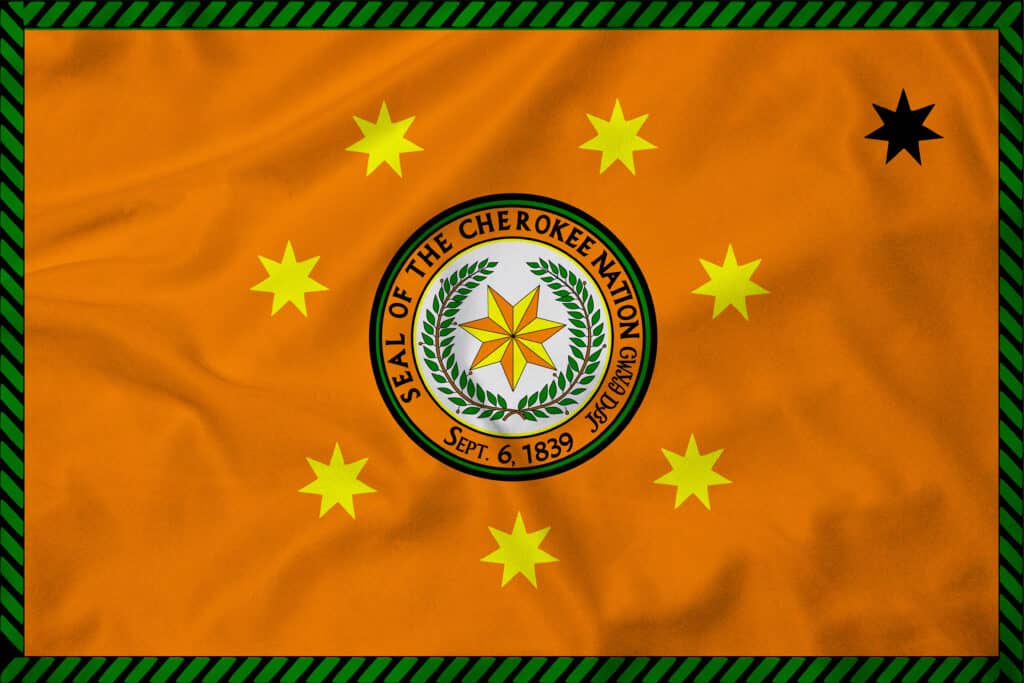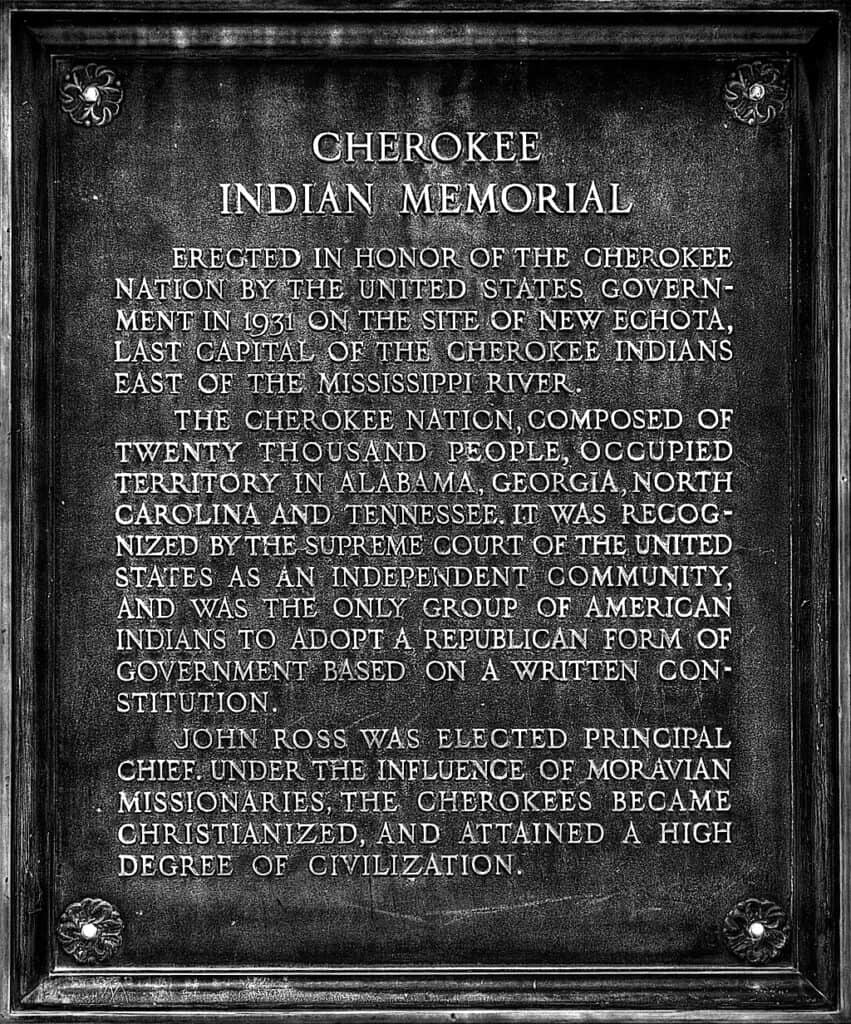The Cherokee were an Iroquoian-speaking North American Indian people who were known for being politically progressive at the time of European colonization of the Americas. Keetoowah and Tsalagi are both derived from a Creek word that means “people of different speech.” After being forced to relocate to Indian Territory because of the passage of the Indian Removal Act, the Cherokee established a new government in the area now known as Tahlequah, Oklahoma (modern-day Oklahoma). On September 6, 1839, a full 68 years before Oklahoma was officially admitted to the Union as a state, its constitution was ratified.
In 1650, the tribe was estimated to have numbered roughly 22,500, and their territory covered a large chunk of the Appalachian Mountains, encompassing the present-day states of Georgia, Tennessee, and North and South Carolina’s westernmost regions. In many ways, the traditional Cherokee way of life and culture were not unlike those of the Creek and other Southeastern tribes. The Cherokee nation was a loose federation of communities that were either red (representing battle) or white (representing peace). Leaders of individual red towns reported to a supreme war chief, whereas officials in individual white towns reported to the supreme peace chief. War ceremonies took place in the red cities, while lawbreakers sought refuge in the peaceful towns.
Names
The Cherokee frequently refer to themselves as a Aniyvwiyai, meaning “the real people,” or Angiduwagi, meaning the Kituwah people. Tsalagi is the word for the Cherokee language. Theories abound as to where the name “Cherokee” came from. One of the local territorial tribes could be responsible for its creation. For instance, the Choctaw words Cha-la-kee and Chi-luk-ik-bi mean “those who reside in the highlands” and “those who live in the cave region,” respectively. Mountains and rivers were present in the areas where the Cherokee lived.
The name first appeared in Spanish records in 1755 with the spelling Tchalaquei; this spelling originated in accounts of the Hernando de Soto expedition from the middle of the 16th century. Since the Creek also inhabited these mountains, another theory proposes that the word “Cherokee” was derived from the Creek word Cvlakke (pronounced “chuh-log-gee”). By contrast, the Iroquois Five Nations, historically based in New York and Pennsylvania, referred to the people as Oyata’ge’rono (“inhabitants of the cave country”). It’s possible that the term “people of different or unusual speech” used by the Muscogee Creek is the source of the word “Cherokee,” considering the two sides spoke different languages.
Locations
The ancient Cherokee are thought to have established numerous settlements across the river plains and mountain ranges of their original land. The Lower Towns were located on both sides of the Keowee River in present-day western Oconee County, South Carolina. Etastoe and Sugartown were two other Cherokee settlements located on the Keowee River. The Overhill tribe established settlements around the lower Little Tennessee River and the upper Tennessee River in what is now southern Tennessee, on the western side of the Appalachian Mountains.
The Cherokee Nation is the largest of the three federally recognized Cherokee tribes in the United States. It was established in the 20th century and now includes people descended from the Old Cherokee Nation, who fled to Indian Territory from the Southeast as pressure mounted, and the Cherokee, who were themselves descended from people who were forcibly removed from their homeland during the Trail of Tears.
Ancestors from the Absentee Shawnee, the Cherokee Freedmen, and the Natchez Nation are also represented in this group. As of the year 2021, the Cherokee Nation had around 400,000 citizens. Located in northeastern Oklahoma, the Cherokee Nation’s tribal jurisdictional territory encompasses 14 counties. The Cherokee Nation’s primary administrative center is in Tahlequah.

The flag of the Cherokee Nation, established in 1839.
©Royal Graphics/Shutterstock.com
Population
The Cherokee Nation is the largest American tribe today, with about 430,000 tribal members. More than 141,000 people call the Cherokee Nation’s reserve in northeastern Oklahoma home. Services in the areas of health, education, employment, housing, community, infrastructure development, and environmental safeguarding are provided. The Cherokee Nation and its subsidiaries employ close to 11,000 people in northwestern Oklahoma.
Beliefs
The traditional tribe views life as deeply spiritual. There is no separation between the spiritual and material realms. The people believe in and pay homage to the Great Spirit Unetlanvhi (“Creator”), the supreme deity who also created the Earth. The Unetlanvhi are held to be all-knowing, all-seeing, and everywhere at once. It is said to have power on par with that of Dâyuni, the Water Beetle, and to have created the world to sustain its progeny. The names Kalvlvtiahi and Unahlahnauhi (“Maker of All Things”) for God are mentioned in the Wahnenauhi Manuscript (“The One Who Lives Above”). Most oral and written Cherokee theologies do not depict the Great Spirit as possessing human characteristics or taking on a physical human form.
Traditional Cherokee cosmology consists of three distinct but interconnected worlds: the Upper World, the Under World, where the spirits inhabit, and This World, where humans reside. Cherokees, in contrast to adherents of some other faiths, do not view humanity as having any special authority or control over the natural world. In its place, the rest of nature happily coexists alongside humans. Humans function as peacekeepers, mediating disputes between different dimensions to ensure stability. Rivers, mountains, caves, and other manmade earth features, together with all of nature’s flora and fauna, are endowed with mystical powers and traits of their own.
Culture
The traditions of the people have been passed down through the generations in many areas, such as language, spirituality, food, storytelling, and the many forms of art that have been created by their people. However, the culture of the Cherokee people is ever evolving, much like the people themselves. Cherokee families have been the primary transmitters of culture for many generations. Every individual, every family, and every community has its own unique set of beliefs and cultural understandings.
Much of the spiritual and ceremonial aspects of traditional Cherokee life are rarely mentioned in public out of respect for their tribal communities. Many modern-day Cherokee combine components of their ancient and contemporary cultures, and many of their people are devoted to more than one faith. No global form of expression of their culture is possible.
Language
As of 2008, there were more than 2,000 native speakers of Cherokee, and many more enrolled in the tribe’s language schools as novices or advanced speakers. The language is a Class IV language due to its difficulty to speak. Cherokee syllabary is used to record the language. Rather than using letters, the writing system relies on 85 distinct symbols, one for each syllable, that together represent the whole spectrum of sounds needed to convey the language. The Cherokee Nation Language Department‘s goal is to ensure the language’s survival and development by fostering the development of fluent second-language speakers.
Cherokee Nation Mission
The Cherokee Nation Mission Statement is as follows:
The Cherokee Nation is committed to protecting our inherent sovereignty, preserving and promoting Cherokee culture, language, and values, and improving the quality of life for the next seven generations of Cherokee Nation citizens.
Up Next:
- Animals in Oklahoma — Learn more about the wildlife found in this middle-America state.
- Discover the 15 Most Beautiful National Parks in America — Take a little trip across the United States and explore these well-preserved lands.
- Discover the 7 Largest Animals in North Carolina — These are the biggest creatures you’ll find in this eastern state.
The photo featured at the top of this post is © Royal Graphics/Shutterstock.com
Sources
- Georgia Encyclopedia, Available here: https://www.georgiaencyclopedia.org/articles/history-archaeology/cherokee-indians/
- National Park Service, Available here: https://www.nps.gov/liri/learn/historyculture/cherokee-people.htm
- US Department of the Interior, Available here: https://www.doi.gov/tribes/cherokee
FAQs (Frequently Asked Questions)
What are the seven Cherokee tribes?
According to Cherokee Phoenix, there are seven Cherokee clans. They are:
- A-ni-gi-lo-hi (Long Hair)
- A-ni-sa-ho-ni (Blue)
- A-ni-wa-ya (Wolf)
- A-ni-go-te-ge-wi (Wild Potato)
- A-ni-a-wi (Deer)
- A-ni-tsi-s-qua (Bird)
- A-ni-wo-di (Paint)
Where does the Cherokee Nation live?
While there are more than 380,000 Cherokee citizen worldwide, over 141,000 live in northeastern Oklahoma within the reservation boundaries.
Thank you for reading! Have some feedback for us? Contact the AZ Animals editorial team.







